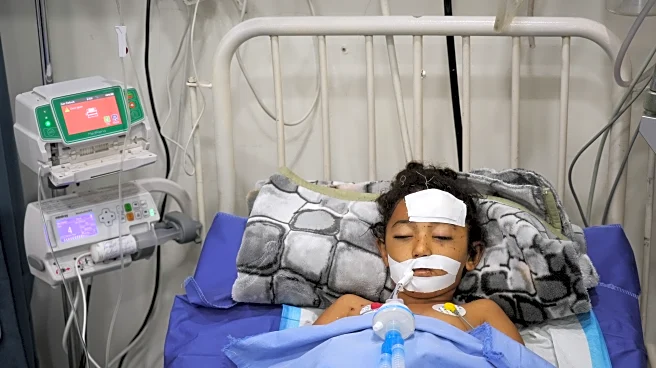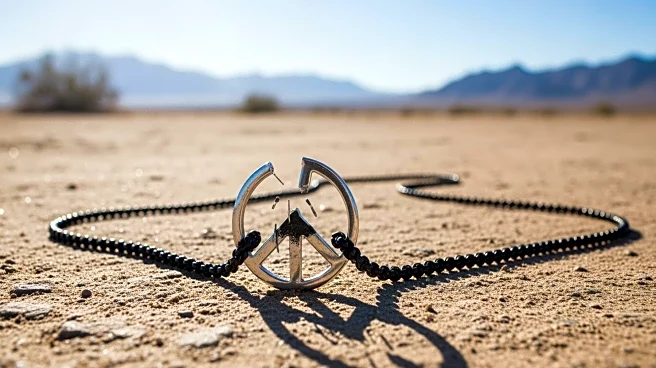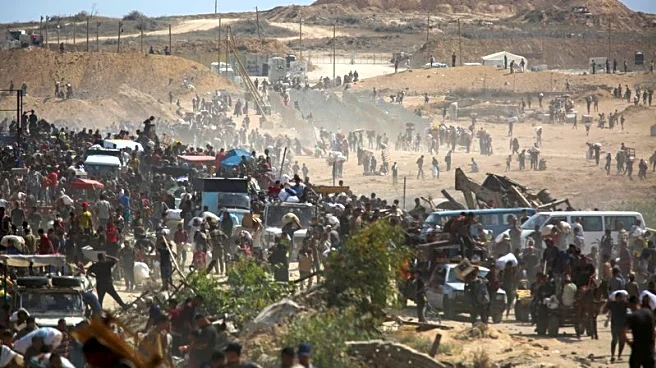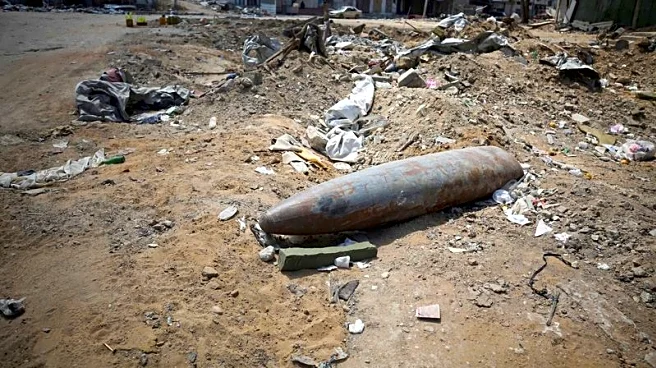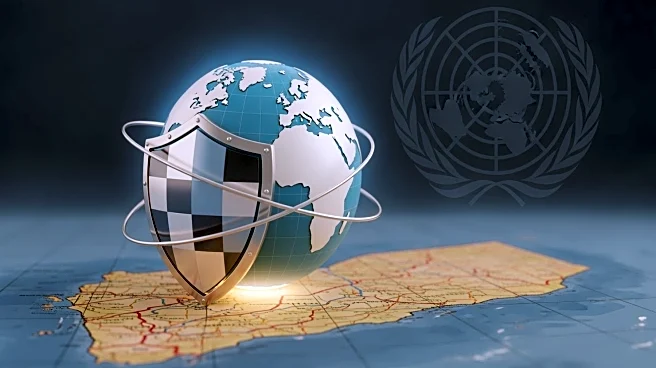What's Happening?
The United Nations Mine Action Service (UNMAS) has reported a significant risk of unexploded ordnance in Gaza as aid workers and displaced Palestinians return to areas previously occupied by the Israeli
military. Since the onset of the conflict, at least 52 Palestinians have been killed and 267 wounded due to unexploded ordnance, with the actual toll potentially higher. UNMAS has identified 560 unexploded ordnance items during the current ceasefire, with many more likely buried under the rubble. The conflict has left up to 60 million tons of debris across Gaza, complicating humanitarian efforts. Health workers have highlighted unexploded ordnance as a major threat, with recent incidents involving children injured by such devices.
Why It's Important?
The presence of unexploded ordnance poses a severe threat to the safety and recovery of Gaza's population, particularly as they attempt to return to their homes and rebuild their lives. The ongoing danger undermines the ceasefire's effectiveness and continues to put civilians at risk, especially children. The humanitarian situation is exacerbated by the lack of medical supplies and infrastructure to treat injuries caused by these explosives. The international community's response, including the deployment of de-mining experts, is crucial to mitigate these risks and support Gaza's recovery. The situation highlights the broader challenges of post-conflict recovery and the need for sustained international aid and intervention.
What's Next?
In the coming weeks, additional international de-mining experts are expected to join efforts to clear unexploded ordnance in Gaza. This initiative aims to reduce the risk to civilians and facilitate safer conditions for returning residents. The ongoing ceasefire provides an opportunity for increased access and clearance operations, although the scale of debris and ordnance remains daunting. Continued international support and funding will be essential to address the humanitarian needs and ensure effective de-mining operations. The situation may prompt further diplomatic discussions on long-term solutions to prevent future conflicts and enhance civilian protection.
Beyond the Headlines
The presence of unexploded ordnance in Gaza raises ethical and legal questions about the conduct of warfare and the responsibilities of involved parties to protect civilian populations. The long-term impact on Gaza's children, who are particularly vulnerable to these dangers, underscores the need for comprehensive post-conflict rehabilitation and support. The situation also highlights the broader geopolitical dynamics in the region, including the role of international actors in conflict resolution and humanitarian aid.


